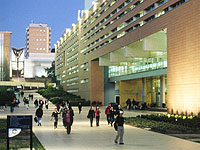 |
|
 |
| |
| |
| |
| |
| |
| |
| |
Campus: Kensington Campus
| |
| |
Career: Postgraduate
| |
| |
Units of Credit: 6
| |
| |
| |
| |
Contact Hours per Week: 3
| |
| |
| |
| |
| |
 |
|
 |
Description
We will explore, from a control-engineering point of view, the structure and function of neural circuits responsible for controlling several hundred functional muscles and coordinating the impedances, forces and displacements of some 110 elemental movements of the human body. The muscles, biomechanical and external systems controlled by the brain can be modelled as multivariable, redundant, varying, potentially unstable, nonlinear dynamical processes. The nervous system displays an impressive ability to stabilise and control this complex system. Clearly, solutions have evolved to problems of control which are only just being recognised in control engineering. To achieve such versatility the brain functions as a family of self-organising, adaptive, optimal, feedforward-feedback controllers and can switch smoothly from one controller to another depending on the task. We will study, with neuroanatomical and neurophysiological detail, the neural circuits and signal processing algorithms that might underlie the development of human movement control systems, from conception to the mature nervous system.
|

